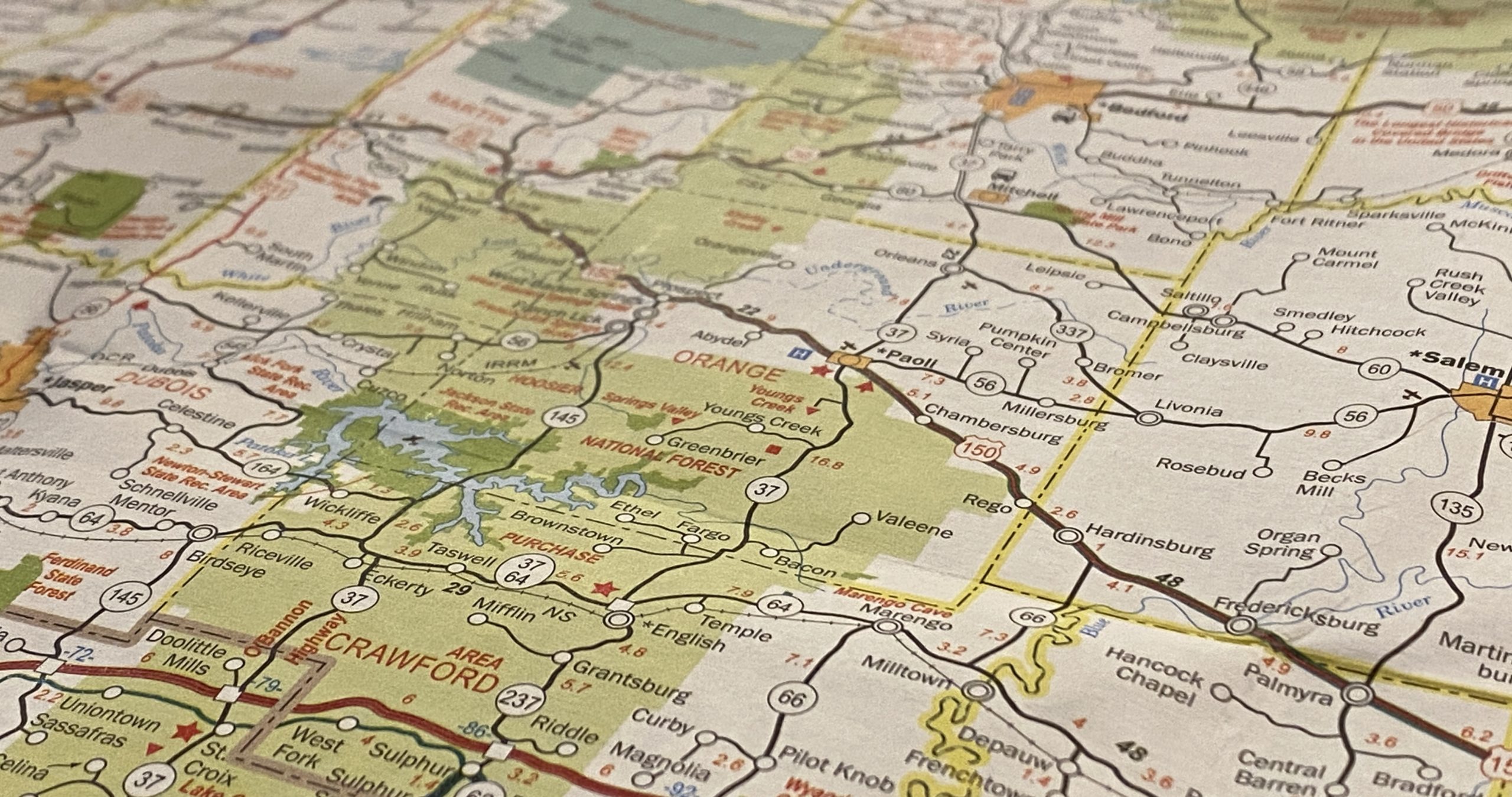By Miles Flynn | Southern Indiana Business Report
FRENCH LICK — Details have now been unveiled on a new initiative that’s using $500 million in state funds to help local communities work together on retaining today’s talent and attracting tomorrow’s workforce. Outlining READI — Regional Economic Acceleration and Development Initiative — for area economic development and government officials June 9 at French Lick Resort were Luke Bosso, Indiana Economic Development Corporation chief of staff, and Mark Wasky, vice president for innovation and strategic initiatives at the agency. (The pair had presented the talk earlier that day at Dimension Mill in Bloomington.)
Regions will drive process
Bosso explained READI builds on the earlier foundation of the Indiana Regional Cities project. While the goal of the new program remains the same — increasing populations by fostering the development of places people want to work, live and play — READI aims to be bigger and to touch more rural areas.
The program targets geographic regions, thereby encouraging cooperation among multiple counties. The local participants will be in the driver’s seat from the beginning, including identifying themselves and applying through the IEDC’s website by the July 1 deadline.
Wasky said it’s likely the state’s regional development authorities will act as the applicants. However, he said it’s possible regions might not quite match the RDA boundary lines. He explained the guiding principle will be identifying regions that are cohesive.
It will be important, Bosso said, for each region to come together on one vision and speak with a single voice.
“We’re not going to play referee,” he said of the local collaboration that will be required. “… We want a strong, strong region to come out of this.”
Project planning
After submitting applications, the regions will then have until the end of August to formulate their specific plans.
“We’re asking regions, ‘Where do you want to be in the next five years?’” Wasky explained.
General guidelines are for projects focusing on quality of life and quality of place, innovations and entrepreneurship efforts, or talent attraction and development initiatives.
Bosso said communities aren’t expected to “reinvent the wheel” and can use READI to build on existing successful programs. However, he went on to say READI won’t be funding a collection of regional projects that are all, basically, the same. In that scenario, he said, IEDC will encourage further collaboration to ensure its funding is used as effectively as possible.
Possible project ideas could include programming targeted to talent attraction, industry innovation, or small business support services; or brick-and-mortar undertakings, such as infrastructure improvements, workforce housing, revitalizing vacant or blighted properties, or adding cultural amenities.
The plans will be reviewed and scored by an outside committee for IEDC to make its ultimate decisions on which projects to pursue, and the selection announcement is expected to come before the end of 2021. (Scoring criteria will be finalized and made public by the end of June.)
Although the selection process will be competitive, Bosso and Wasky estimated 10, 15 or possibly even 18 regions will be chosen to participate. Funding isn’t guaranteed to be awarded evenly, Wasky stressed. Instead, awards will be made based on expected impact. And he said if a project isn’t identified as a good fit for READI but still has merit, IEDC will work to match it with other possible state funding sources.
Wasky encouraged the regional work groups to keep their planning and projects highly visible in their communities throughout the process.
State money leveraging local dollars
READI’s state funds are required to be matched 4:1 by participating local regions, creating a potential statewide impact of $2.5 billion.
The local regions’ contributions can make use of state and federal stimulus money but are also expected to include substantial contributions from partners in the private sector. It will be important to identify “anchor institutions” that will still be integral parts of the community decades from now, Bosso explained. The IEDC leadership sees such partnerships as ways to help ensure sustainability. Wasky did point out the regions don’t need to have all funding sources identified by the time the plan is submitted.
In addition, financial assistance for planning is also available through the agency and can be applied for during the submission process. Planning money must be matched 2:1 by local partners, although Wasky noted existing plans or other local efforts could be considered as in-kind contributions.
IEDC helping step by step
While the regions will be in control of the process, IEDC will be there to help every step of the way. Bosso said IEDC’s role won’t be merely cutting checks and walking away. Instead, there will be a long-term open line of communication.
He stressed failure isn’t an option for IEDC, and asked, “At the end of the day, we all want to see a better Indiana, right?”
Local efforts already underway
Jeff Quyle, CEO of the Bedford-based regional economic development group Radius Indiana, and host of the June 9 session at French Lick, noted Radius and the Bloomington-based Regional Opportunities Initiative are already working to lay groundwork in the 11-county Indiana Uplands region for this collaboration. In fact, Quyle said a listening tour is scheduled to get underway the week of June 14, beginning with local economic development organizations and community foundations, to let local stakeholders identify the type of projects that could work here. More listening sessions will continue past the July 1 application deadline and through the planning process, Quyle said.



